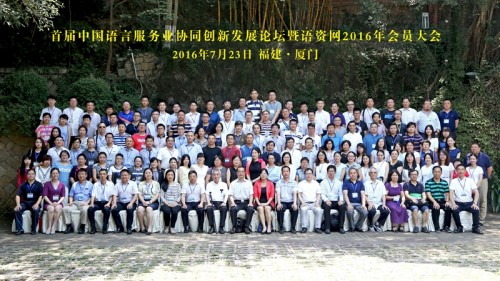口译笔译之英译汉原文
Hidden Within Technology’s Empire, a Republic of Letters
When I was a boy “discovering literature”, I used to think how wonderful it would be if every other person on the street were familiar with Proust and Joyce or T. E. Lawrence or Pasternak and Kafka. Later I learned how refractory to high culture the democratic masses were. Lincoln as a young frontiersman read Plutarch, Shakespeare and the Bible. But then he was Lincoln.
Later when I was traveling in the Midwest by car, bus and train, I regularly visited small-town libraries and found that readers in Keokuk, Iowa, or Benton Harbor, Mich., were checking out Proust and Joyce and even Svevo and Andrei Biely. D. H. Lawrence was also a favorite. And sometimes I remembered that God was willing to spare Sodom for the sake of 10 of the righteous. Not that Keokuk was anything like wicked Sodom, or that Proust’s Charlus would have been tempted to settle in Benton Harbor, Mich. I seem to have had a persistent democratic desire to find evidences of high culture in the most unlikely places.
For many decades now I have been a fiction writer, and from the first I was aware that mine was a questionable occupation. In the 1930’s an elderly neighbor in Chicago told me that he wrote fiction for the pulps. “The people on the block wonder why I don’t go to a job, and I’m seen puttering around, trimming the bushes or painting a fence instead of working in a factory. But I’m a writer. I sell to Argosy and Doc Savage,” he said with a certain gloom. “They wouldn’t call that a trade.” Probably he noticed that I was a bookish boy, likely to sympathize with him, and perhaps he was trying to warn me to avoid being unlike others. But it was too late for that.
From the first, too, I had been warned that the novel was at the point of death, that like the walled city or the crossbow, it was a thing of the past. And no one likes to be at odds with history. Oswald Spengler, one of the most widely read authors of the early 30’s, taught that our tired old civilization was very nearly finished. His advice to the young was to avoid literature and the arts and to embrace mechanization and become engineers.
In refusing to be obsolete, you challenged and defied the evolutionist historians. I had great respect for Spengler in my youth, but even then I couldn’t accept his conclusions, and (with respect and admiration) I mentally told him to get lost.
Sixty years later, in a recent issue of The Wall Street Journal, I come upon the old Spenglerian argument in a contemporary form. Terry Teachout, unlike Spengler, does not dump paralyzing mountains of historical theory upon us, but there are signs that he has weighed, sifted and pondered the evidence.
He speaks of our “atomized culture,” and his is a responsible, up-to-date and carefully considered opinion. He speaks of “art forms as technologies.” He tells us that movies will soon be “downloadable”—that is, transferable from one computer to the memory of another device—and predicts that films will soon be marketed like books. He predicts that the near-magical powers of technology are bringing us to the threshold of a new age and concludes, “Once this happens, my guess is that the independent movie will replace the novel as the principal vehicle for serious storytelling in the 21st century.”
In support of this argument, Mr. Teachout cites the ominous drop in the volume of book sales and the great increase in movie attendance: “For Americans under the age of 30, film has replaced the novel as the dominant mode of artistic expression_r.” To this Mr. Teachout adds that popular novelists like Tom Clancy and Stephen King “top out at around a million copies per book,” and notes, “The final episode of NBC’s ‘Cheers,’ by contrast, was seen by 42 million people.”
On majoritarian grounds, the movies win. “The power of novels to shape the national conversation has declined,” says Mr. Teachout. But I am not at all certain that in their day “Moby-Dick” or “The Scarlet Letter” had any considerable influence on “the national conversation.” In the mid-19th century it was “Uncle Tom’s Cabin” that impressed the great public. “Moby-Dick” was a small-public novel.
The literary masterpieces of the 20th century were for the most part the work of novelists who had no large public in mind. The novels of Proust and Joyce were written in a cultural twilight and were not intended to be read under the blaze and dazzle of popularity.
Mr. Teachout’s article in The Journal follows the path generally taken by observers whose aim is to discover a trend. “According to one recent study 55 percent of Americans spend less than 30 minutes reading anything at all. 。 . 。 It may even be that movies have superseded novels not because Americans have grown dumber but because the novel is an obsolete artistic technology.”
“We are not accustomed to thinking of art forms as technologies,” he says, “but that is what they are, which means they have been rendered moribund by new technical developments.”
Together with this emphasis on technics that attracts the scientific-minded young, there are other preferences discernible: It is better to do as a majority of your contemporaries are doing, better to be one of millions viewing a film than one of mere thousands reading a book. Moreover, the reader reads in solitude, whereas the viewer belongs to a great majority; he has powers of numerosity as well as the powers of mechanization. Add to this the importance of avoiding technological obsolescence and the attraction of feeling that technics will decide questions for us more dependably than the thinking of an individual, no matter how distinctive he may be.
John Cheever told me long ago that it was his readers who kept him going, people from every part of the country who had written to him. When he was at work, he was aware of these readers and correspondents in the woods beyond the lawn. “If I couldn’t picture them, I’d be sunk,” he said. And the novelist Wright Morris, urging me to get an electric typewriter, said that he seldom turned his machine off. “When I’m not writing, I listen to the electricity,” he said. “It keeps me company. We have conversations.”
I wonder how Mr. Teachout might square such idiosyncrasies with his “art forms as technologies.” Perhaps he would argue that these two writers had somehow isolated themselves from “broad-based cultural influence.” Mr. Teachout has at least one laudable purpose: He thinks that he sees a way to bring together the Great Public of the movies with the Small Public of the highbrows. He is, however, interested in millions: millions of dollars, millions of readers, millions of viewers.
The one thing “everybody” does is go to the movies, Mr. Teachout says. How right he is.
Back in the 20’s children between the ages of 8 and 12 lined up on Saturdays to buy their nickel tickets to see the crisis of last Saturday resolved. The heroine was untied in a matter of seconds just before the locomotive would have crushed her. Then came a new episode; and after that the newsreel and “Our Gang.” Finally there was a western with Tom Mix, or a Janet Gaynor picture about a young bride and her husband blissful in the attic, or Gloria Swanson and Theda Bara or Wallace Beery or Adolphe Menjou or Marie Dressler. And of course there was Charlie Chaplin in “The Gold Rush,” and from “The Gold Rush” it was only one step to the stories of Jack London.
There was no rivalry then between the viewer and the reader. Nobody supervised our reading. We were on our own. We civilized ourselves. We found or made a mental and imaginative life. Because we could read, we learned also to write. It did not confuse me to see “Treasure Island” in the movies and then read the book. There was no competition for our attention.
One of the more attractive oddities of the United States is that our minorities are so numerous, so huge. A minority of millions is not at all unusual. But there are in fact millions of literate Americans in a state of separation from others of their kind. They are, if you like, the readers of Cheever, a crowd of them too large to be hidden in the woods. Departments of literature across the country have not succeeded in alienating them from books, works old and new. My friend Keith Botsford and I felt strongly that if the woods were filled with readers gone astray, among those readers there were probably writers as well.
To learn in detail of their existence you have only to publish a magazine like The Republic of Letters. Given encouragement, unknown writers, formerly without hope, materialize. One early reader wrote that our paper, “with its contents so fresh, person-to-person,” was “real, non-synthetic, undistracting.” Noting that there were no ads, she asked, “Is it possible, can it last?” and called it “an antidote to the shrinking of the human being in every one of us.” And toward the end of her letter our correspondent added, “It behooves the elder generation to come up with reminders of who we used to be and need to be.”
This is what Keith Botsford and I had hoped that our “tabloid for literates” would be. And for two years it has been just that. We are a pair of utopian codgers who feel we have a duty to literature. I hope we are not like those humane do-gooders who, when the horse was vanishing, still donated troughs in City Hall Square for thirsty nags.
We have no way of guessing how many independent, self-initiated connoisseurs and lovers of literature have survived in remote corners of the country. The little evidence we have suggests that they are glad to find us, they are grateful. They want more than they are getting. Ingenious technology has failed to give them what they so badly need.
蜗居在巷陌的寻常幸福
隐逸的生活似乎在传统意识中一直被认为是幸福的至高境界。但这种孤傲遁世同时也是孤独的,纯粹的隐者实属少数,而少数者的满足不能用来解读普世的幸福模样。
有道是小隐隐于野,大隐隐于市。真正的幸福并不隐逸,可以在街市而不是丛林中去寻找。
晨光,透过古色古香的雕花窗棂,给庭院里精致的盆景慢慢地化上一抹金黄的淡妆。那煎鸡蛋的“刺啦”声袅袅升起,空气中开始充斥着稚嫩的童音、汽车启动的节奏、夫妻间甜蜜的道别,还有邻居们简单朴素的问好。巷陌中的这一切,忙碌却不混乱,活泼却不嘈杂,平淡却不厌烦。
巷尾的绿地虽然没有山野的苍翠欲滴,但是空气中弥漫着荒野中所没有的生机。微黄的路灯下,每一张长椅都写着不同的心情,甜蜜与快乐、悲伤与喜悦,交织在一起,在静谧中缓缓发酵。谁也不会知道在下一个转角中会是怎样的惊喜,会是一家风格独特食客不断的小吃店?是一家放着爵士乐的酒吧?还是一家摆着高脚木凳、连空气都闲散的小小咖啡馆?坐在户外撑着遮阳伞的木椅上,和新认识的朋友一边喝茶,一边谈着自己小小的生活,或许也是一种惬意。
一切,被时间打磨,被时间沉淀,终于形成了一种习惯,一种默契,一种文化。
和来家中做客的邻居朋友用同一种腔调巧妙地笑谑着身边的琐事,大家眯起的眼睛都默契地闪着同一种狡黠;和家人一起围在饭桌前,衔满食物的嘴还发着含糊的声音,有些聒噪,但没人厌烦。
小巷虽然狭窄,却拉不住快乐蔓延的速度……
随着城市里那些密集而冰冷的高楼大厦拔地而起,在拥堵的车流中,在污浊的空气里,人们的幸福正在一点点地破碎,飘零。大家住得越来越宽敞,越来越私密。自我,也被划进一个单独的空间里,小心地不去触碰别人的心灵,也不容许他人轻易介入。可是,一个人安静下来时会觉得,曾经厌烦的那些嘈杂回想起来很温情很怀念。
比起高楼耸立的曼哈顿,人们更加喜欢佛罗伦萨红色穹顶下被阳光淹没的古老巷道;比起在夜晚光辉璀璨的陆家嘴,人们会更喜欢充满孩子们打闹嬉笑的万航渡路。就算已苍然老去,支撑起梦境的应该是老房子暗灰的安详,吴侬软语的叫卖声,那一方氤氲过温馨和回忆的小弄堂。
如果用一双细腻的眼眸去观照,其实每一片青苔和爬山虎占据的墙角,都是墨绿色的诗篇,不会飘逸,不会豪放,只是那种平淡的幸福,简简单单。
幸福是什么模样,或许并不难回答。幸福就是一本摊开的诗篇,关于在城市的天空下,那些寻常巷陌的诗。
夜幕笼罩,那散落一地的万家灯火中,有多少寻常的幸福正蜗居在巷陌……














